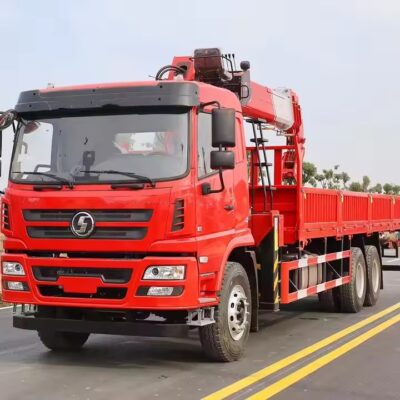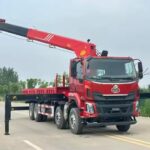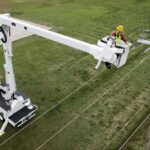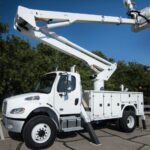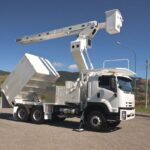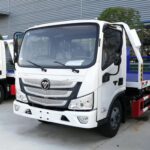In the realm of modern construction, maintenance, and various industrial tasks, efficiency and safety are paramount. One innovation that has significantly transformed these sectors is the advent of telescopic aerial lift trucks. These versatile machines have revolutionized the way we approach tasks at height, offering an unparalleled combination of reach, precision, and adaptability. In this article, we delve into the world of telescopic aerial lift trucks, exploring their capabilities, applications, and the impact they have on diverse industries.
The Evolution of Aerial Lift Technology
Aerial lift technology has come a long way from traditional ladders and scaffolding. Telescopic aerial lift trucks, also known as telescopic boom lifts or telehandlers, have emerged as a pinnacle of this evolution. Unlike conventional aerial lifts that have a fixed vertical reach, telescopic aerial lift trucks are equipped with extendable booms that can reach impressive heights while maintaining stability and control.
The core innovation of these machines lies in their telescopic boom mechanism. This mechanism enables the extension and retraction of the boom, giving operators the ability to precisely position the platform at varying heights and distances. With enhanced maneuverability and a broader range of motion, these lift trucks offer an unrivaled advantage over their predecessors.
Precision at New Heights
One of the most remarkable features of telescopic aerial lift trucks is their precision. Modern models are designed with advanced hydraulic systems that allow for smooth and controlled movement of the boom. This level of control is essential when working in tight spaces or around obstacles. Operators can position the platform with millimeter-level accuracy, reducing the margin for error in tasks that demand delicate handling.
Industries such as construction, telecommunications, and maintenance of large structures have greatly benefited from this precision. Whether it’s installing high-voltage power lines, conducting repairs on intricate architectural details, or reaching remote areas for equipment maintenance, telescopic aerial lift trucks have become an indispensable tool for professionals who require both height and accuracy.
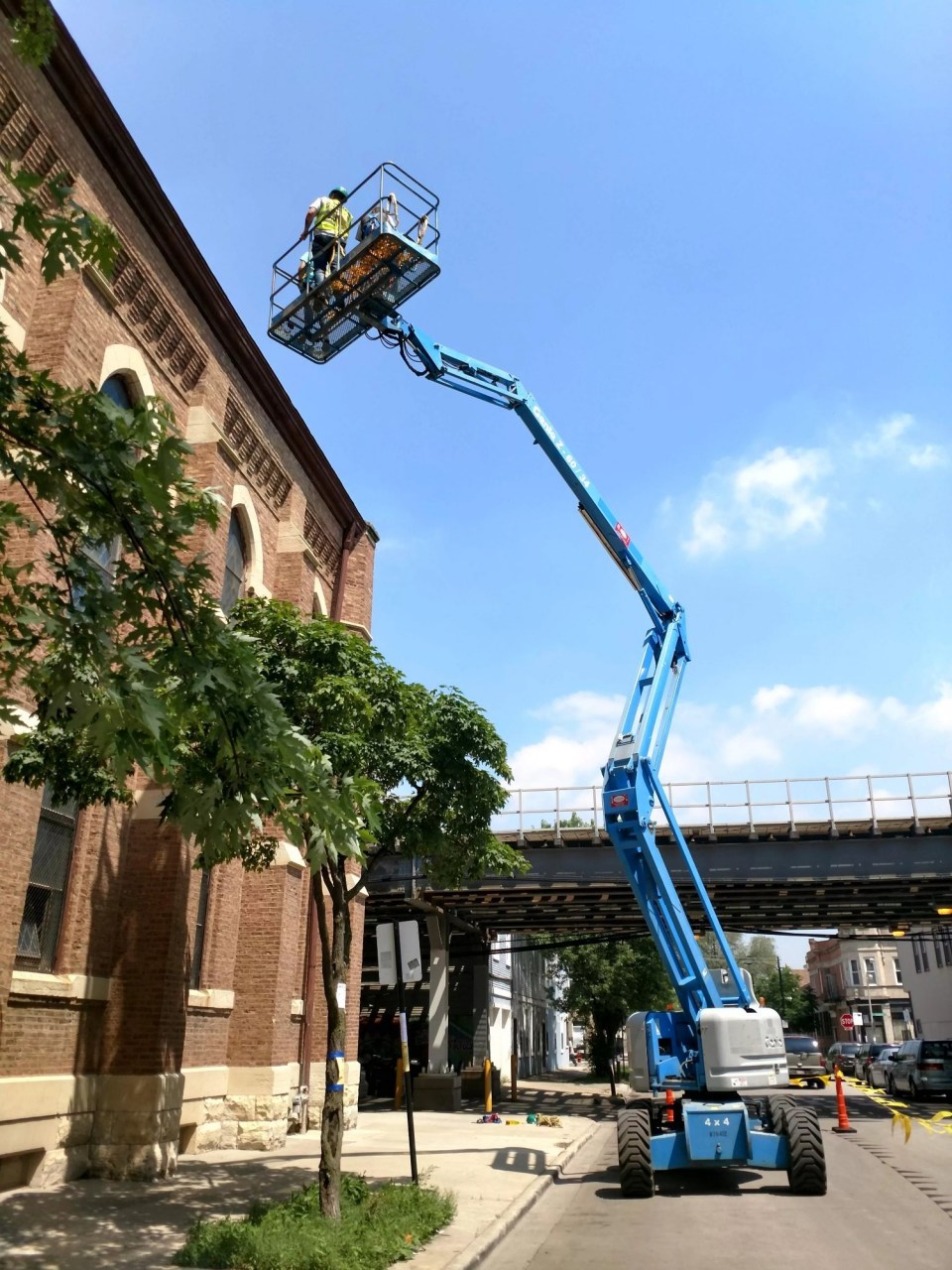
Versatility Redefined
Versatility is a hallmark of telescopic aerial lift trucks. These machines often come with interchangeable attachments that further expand their capabilities. Attachments such as baskets, winches, and material handling forks enable lift trucks to undertake a wide array of tasks. This adaptability not only enhances efficiency but also reduces the need for multiple specialized machines, streamlining operations and reducing costs.
In the construction sector, telehandlers can be equipped with buckets for moving and placing materials, or with specialized platforms for workers to carry out tasks at varying heights. In agriculture, these machines are used for tasks ranging from stacking hay bales to reaching fruit at the top of trees. The ability to switch between attachments makes telescopic aerial lift trucks a cost-effective solution that can tackle diverse challenges across industries.
Safety First
Safety is a paramount concern whenever working at heights. Telescopic aerial lift trucks are designed with numerous safety features to mitigate risks. Stabilizers or outriggers provide a solid base, ensuring stability even on uneven terrain. Modern models are equipped with sensors and alarms that alert operators to potential hazards, such as overhead obstacles or excessive platform tilt.
Moreover, the enhanced precision of these machines contributes to safer operations. Operators can position the platform exactly where it’s needed, minimizing the need for risky maneuvers or overextending. Additionally, the ability to reach great heights without compromising stability reduces the need for scaffolding or precarious climbing, reducing the potential for falls and accidents.
Environmental Impact and Efficiency
As industries worldwide strive to reduce their carbon footprint, the environmental impact of equipment becomes a critical consideration. Telescopic aerial lift trucks are designed with fuel efficiency in mind. Many models incorporate hybrid or electric systems, minimizing emissions and reducing operational costs. This eco-conscious approach not only benefits the environment but also aligns with the evolving regulations and standards of sustainability.
Furthermore, the efficiency of telescopic aerial lift trucks cannot be overstated. The time saved by reaching great heights quickly and with precision translates to increased productivity. Projects that once required significant time and resources can now be completed more swiftly, allowing businesses to take on more projects and expand their horizons.
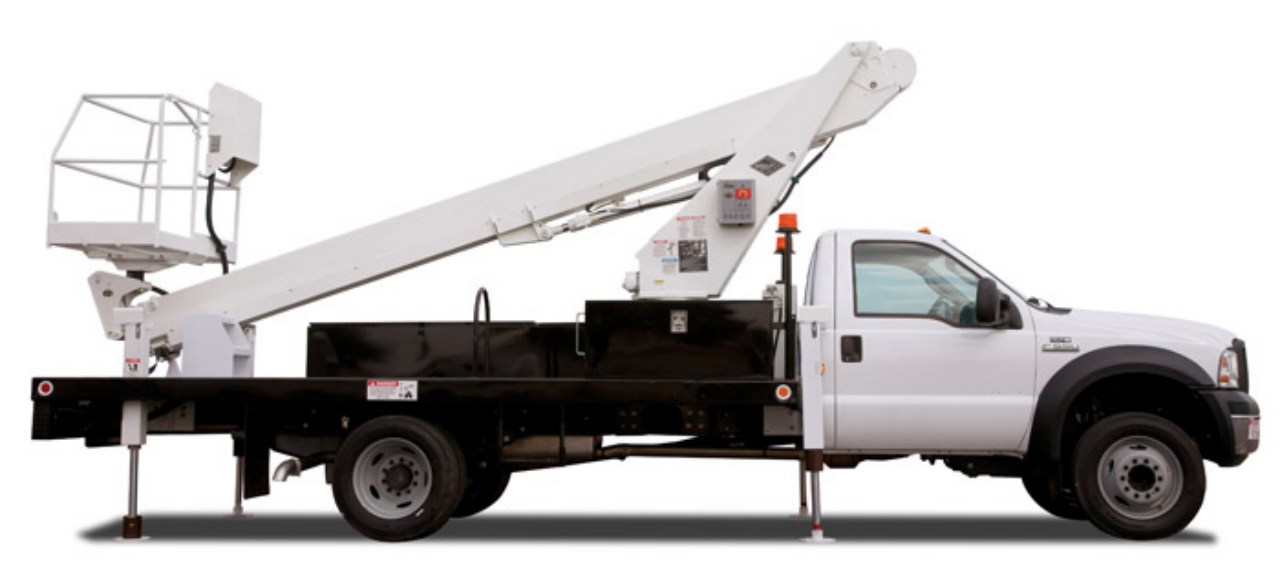
Shaping the Future of Industry
The emergence of telescopic aerial lift trucks has undoubtedly shaped the future of various industries. From construction and maintenance to agriculture and emergency services, these machines have proven their worth in diverse contexts. As technology continues to advance, we can anticipate even more sophisticated features and improvements that will further enhance the capabilities of these remarkable machines.
Overcoming Challenges and Pushing Boundaries
While telescopic aerial lift trucks have undoubtedly brought about a paradigm shift in various industries, their journey hasn’t been without challenges. One of the primary hurdles has been adapting these machines to handle extreme conditions and terrains. Industries such as forestry, mining, and disaster response often require equipment that can withstand harsh environments.
Manufacturers have risen to the occasion by engineering specialized models of telescopic aerial lift trucks built to thrive in these demanding contexts. These models might feature reinforced structures, all-terrain capabilities, and additional safety measures to address the unique challenges posed by rugged landscapes and unpredictable conditions. This adaptability has allowed industries that operate in remote or hazardous locations to benefit from the advantages of telescopic aerial lift technology.
Training and Skill Enhancement
As technology evolves, so do the skills required to operate and maintain these advanced machines. The operation of telescopic aerial lift trucks demands a high level of expertise due to their intricate controls and precision requirements. Proper training is crucial to ensure operators can effectively maneuver the equipment while ensuring their safety and the safety of those around them.
Recognizing this need, training programs have been established to equip operators with the skills and knowledge necessary to handle telescopic aerial lift trucks efficiently. These programs cover aspects such as equipment operation, safety protocols, maintenance procedures, and emergency response techniques. By investing in operator training, industries can optimize the benefits of these machines while minimizing the risks associated with improper operation.
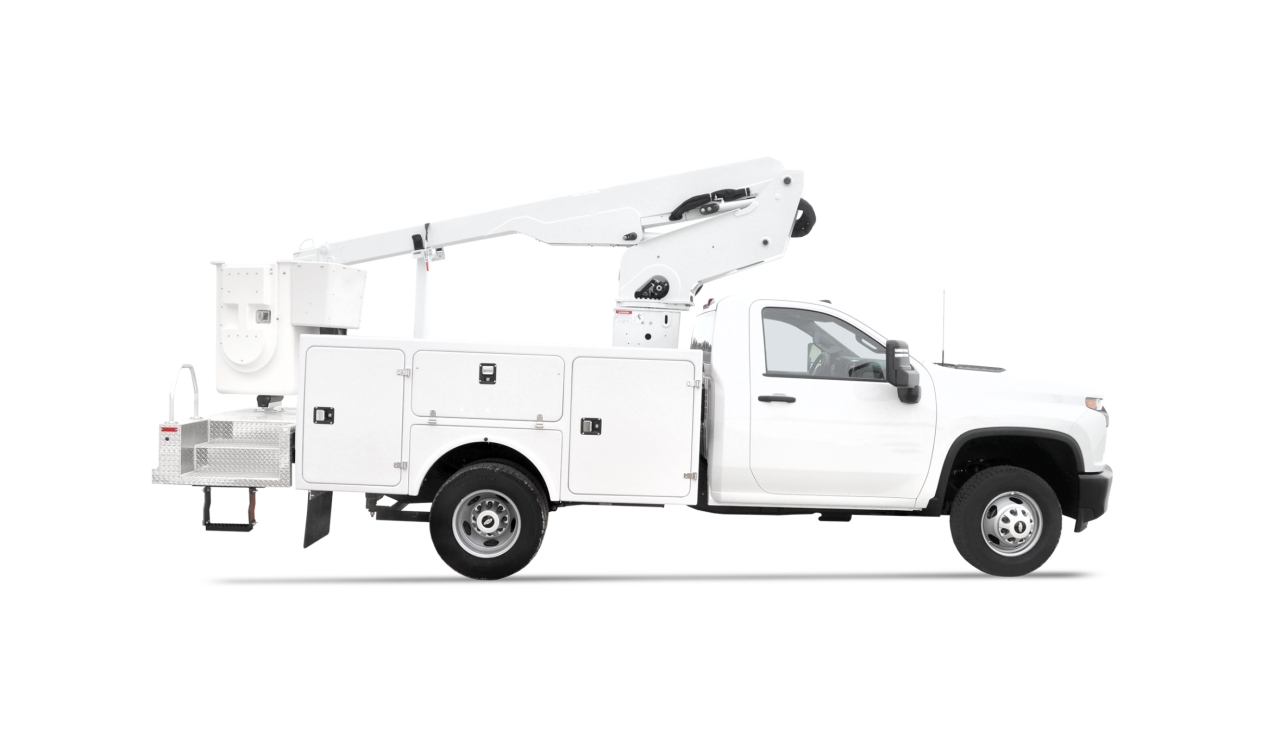
Innovations on the Horizon
The journey of telescopic aerial lift trucks is far from over. As technology continues to advance, we can expect to see even more impressive innovations that further expand the capabilities of these machines. Some areas of development to watch include:
1. Autonomous Capabilities:
Advancements in automation and robotics are likely to influence the future of telescopic aerial lift trucks. Imagine machines equipped with AI-driven systems that can position themselves autonomously, perform predefined tasks, and adapt to changing conditions. This could increase efficiency, reduce the need for constant operator intervention, and open up new possibilities for industries.
2. Enhanced Telematics:
Integration of advanced telematics systems will enable real-time monitoring of equipment performance, fuel consumption, and operator behavior. These insights can help industries optimize their operations, enhance maintenance schedules, and improve overall safety.
3. Extended Reach:
While the current reach of telescopic aerial lift trucks is already impressive, there’s always room for more. Manufacturers might develop models with even longer booms, allowing access to previously inaccessible heights.
4. Improved Energy Storage:
The ongoing push for cleaner energy sources could lead to advancements in battery technology, increasing the runtime and efficiency of electric and hybrid telescopic aerial lift trucks.
5. Collaboration with Other Technologies:
Integration with other technologies like augmented reality (AR) and virtual reality (VR) could provide operators with enhanced visualization, aiding them in navigating complex tasks with even greater precision.
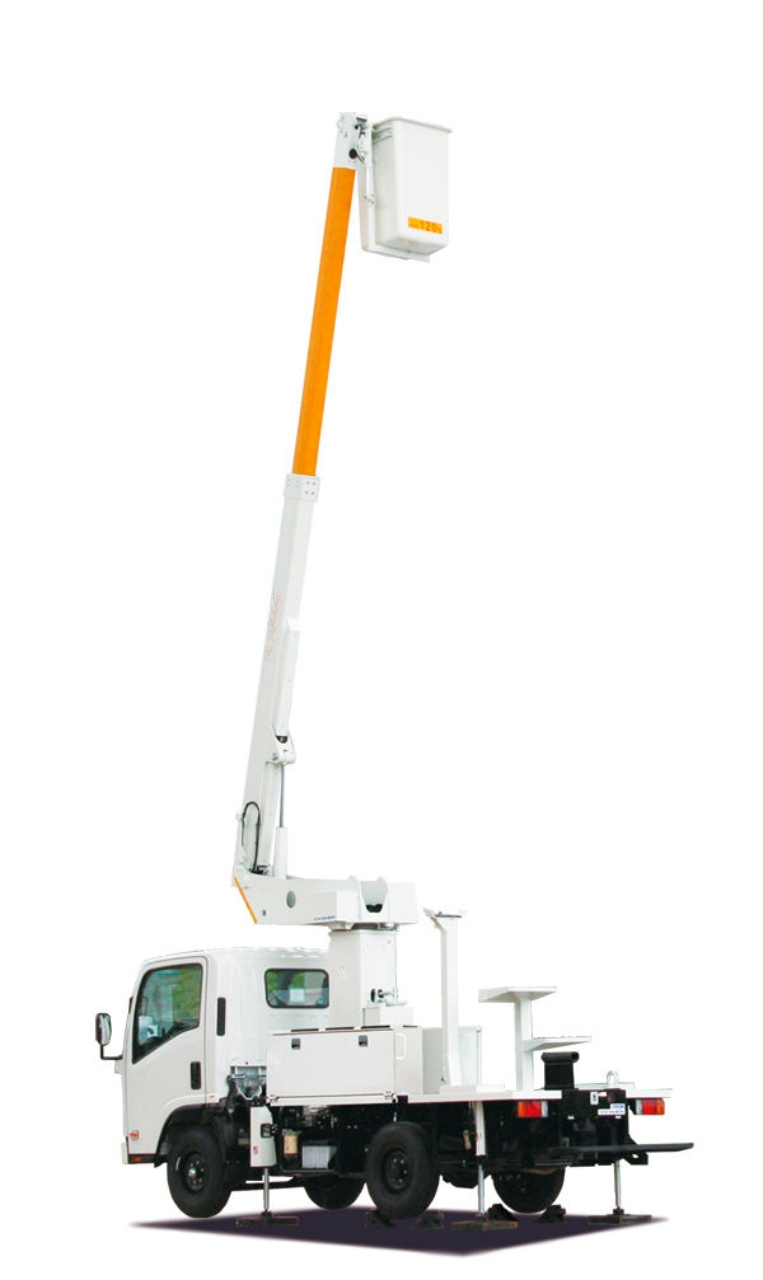
Conclusion
Telescopic aerial lift trucks have undoubtedly transformed the landscape of industries that require work at height. Their combination of precision, versatility, safety features, and environmental considerations has made them indispensable tools for a wide range of applications. From construction to maintenance, these machines have reshaped how tasks are approached, enabling professionals to work more efficiently and safely.
As these machines continue to evolve, pushing boundaries and overcoming challenges, we can anticipate a future where they play an even more significant role in various sectors. With innovations such as autonomous capabilities and enhanced telematics on the horizon, the possibilities are endless. The journey of telescopic aerial lift trucks serves as a testament to human ingenuity, where technology converges with the necessity to create tools that reach new heights—both metaphorically and quite literally.


